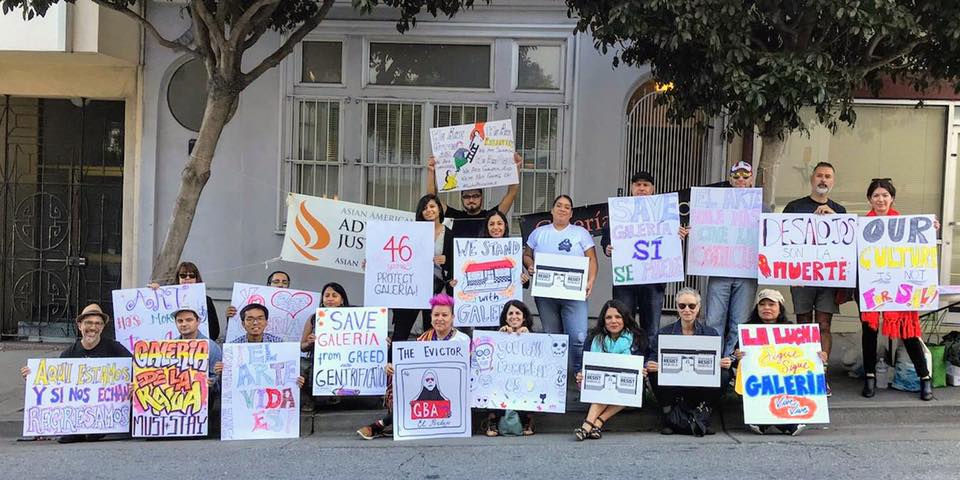
For nearly eight years, Sandra García Rivera would step up to the mic at Galería de la Raza in San Francisco’s Mission District and invite members of the historically Latinx community to share their art. The monthly Lunada Literary Lounge — so called because the event was held during full moons — was a space to celebrate pan-Latinx art and creativity. On any given night, the audience might hear mariachi ballads, salsa classics, songs in Nahuatl, or poems and essays about everything from family to religion, sexuality to decolonization.
But last October, Galería was forced out of its home of 46 years after its rent doubled; the last Lunada in Galería’s historic space was held that same month. To many in San Francisco, the news was yet another example of two groups fundamental to the city’s identity being displaced: Latinx people and artists.
“People love our food, they love our music,” García Rivera said. “But when it comes to our lives, and what it takes to create our beautiful culture, they don’t want that.”
Galería de la Raza has served as the hub for Latinx art in the Mission since its founding in 1970. In addition to the monthly Lunadas, it facilitates mentorship programs for young artists, hosts exhibitions, and runs a digital mural program — all designed to keep alive the Mission’s Latinx history that dates to 1776, when Franciscan friars erected Mission San Francisco de Asís, the city’s oldest building.
But fewer and fewer artists and Latinx people live in the Mission, and the numbers are likely to decrease further. The neighborhood, which was 60 percent Hispanic in 2000, could be just 31 percent by 2025, according to a recent estimate by the San Francisco Board of Supervisors. (About 45 percent of Mission residents identify as Hispanic today.) In a 2015 survey of nearly 600 San Francisco artists, more than 70 percent reported they had been or were being displaced from their workplaces, homes, or both, while the remaining 30 percent were worried such a fate awaited them.
San Francisco’s fast-rising cost of living, and the inequality that has bloomed alongside it, is the culprit. The Board of Supervisors predicts the share of Mission households earning $150,000 or more will rise from 12 percent in 2000 to 26 percent by 2025. A Bitterroot analysis of Census tracts found that the Mission’s most heavily-Hispanic areas have much lower per-capita and household incomes than those with higher proportions of white residents.
The weight of displacement is familiar to García Rivera, who recently moved to New York City. Throughout her time with Galería, she watched constant negotiations for a sustainable lease. And, like so many Bay Area artists, she herself bounced from home to home. “I had never been more unstable in my life in terms of finding a place to live than during those years in the Bay,” she said.
It took nearly 50 years, but Galería eventually succumbed to the same instability. “Galería is a beacon of cultural resistance, of education. It’s a beacon of hope,” executive director Ani Rivera told the San Francisco Chronicle. “It’s not just the brick and mortar.”
Galería is currently operating out of a temporary space, but it did manage to win a small victory: in January, San Francisco’s Historic Preservation Commission began the process of designating Galería’s former home a city landmark (despite the owner’s opposition), the first such designation for a Latinx cultural institution. Though Galería still must leave the space, the decision was, in Rivera’s words, “a moment for us to stop the bleeding.”
To García Rivera, the former Lunada host, the designation feels like too little, too late. But landmark status will make it easier for the city to document and acknowledge the half-century of contributions Galería and its founding artists made to San Francisco. And while changes in the city may be forcing Galería to move, the organization’s roots will likely remain in the Mission, where it is negotiating a multi-year lease in a brand-new building. In the organization’s Facebook post announcing the move, it reminded followers of a well-known proverb Latinx activists have used for years: “They tried to bury us; they didn’t know we were seeds.”
This story originally appeared in the Bitterroot newsletter.
